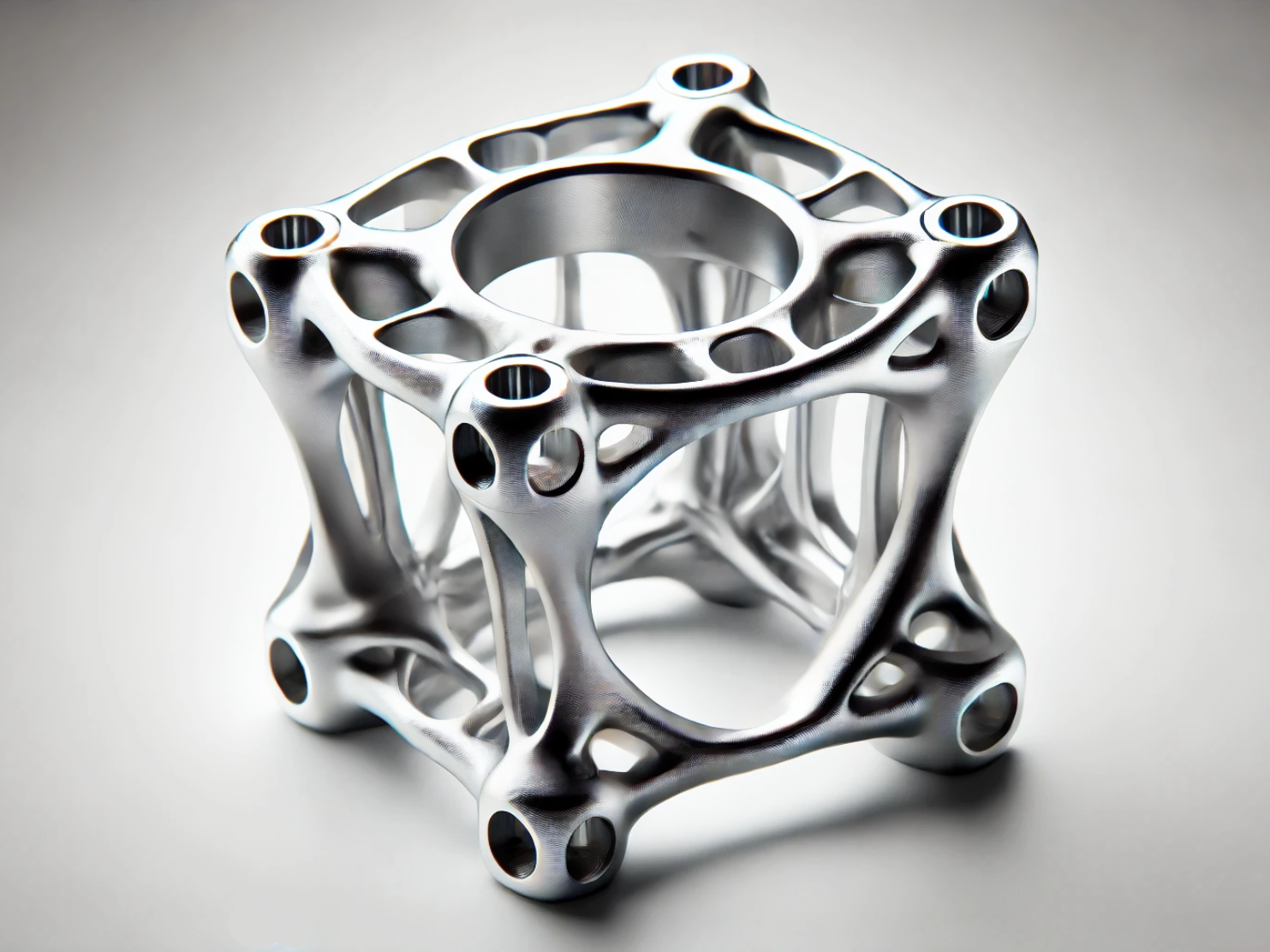Stainless Steel 3D Printing for Robotics: High-Precision Structural Frames and Joints
Introduction
Stainless steel 3D printing provides high-precision manufacturing capabilities critical for producing robust, lightweight structural frames and joints in advanced robotic systems. Leveraging metal 3D printing technologies such as Selective Laser Melting (SLM) and Direct Metal Laser Sintering (DMLS), high-strength stainless steels like SUS316L and SUS15-5PH are used to create complex parts with excellent mechanical performance, corrosion resistance, and dimensional accuracy.
Compared to traditional fabrication methods, stainless steel 3D printing for robotics enables design optimization for reduced weight, increased structural integrity, and rapid prototyping of custom robotic elements.
Applicable Material Matrix
Material | Ultimate Tensile Strength (MPa) | Yield Strength (MPa) | Elongation (%) | Corrosion Resistance | Robotics Application Suitability |
|---|---|---|---|---|---|
570 | 485 | 40% | Excellent | Structural frames, flexible joints | |
1000 | 880 | 15% | Good | High-load arms, rotary joints | |
1100 | 1000 | 10% | Good | High-strength robotic linkages | |
520 | 220 | 55% | Very Good | Lightweight brackets, low-load supports | |
650 | 450 | 20% | Moderate | Wear-resistant rotary components | |
700 | 500 | 15% | Moderate | Robotic gripping elements requiring wear resistance |
Material Selection Guide
SUS316L: Combining tensile strength of 570 MPa with elongation of 40%, SUS316L is ideal for lightweight, corrosion-resistant robotic structural frames and articulated joints operating in humid, cleanroom, or outdoor environments.
SUS15-5PH: With tensile strength reaching 1000 MPa and yield strength of 880 MPa, SUS15-5PH is suited for high-load robotic arms, rotary axes, and base structures demanding fatigue resistance and stability.
SUS630/17-4PH: Offering excellent mechanical performance (1100 MPa tensile strength), SUS630 is selected for robotic components that require high stiffness and consistent load-carrying capacity in dynamic applications.
SUS304L: With superior formability and corrosion resistance, SUS304L is ideal for non-critical brackets, lightweight support structures, and external casings for robotic assemblies.
SUS410: A martensitic stainless steel with wear-resistant properties (~400 HV hardness after heat treatment), SUS410 is used for rotating robotic parts and bearings operating in abrasive conditions.
SUS420: Providing higher hardness (~550 HV) after hardening, SUS420 is used for wear-prone robotic gripping tools and end-effectors exposed to repetitive mechanical stress.
Process Performance Matrix
Attribute | Stainless Steel 3D Printing Performance |
|---|---|
Dimensional Accuracy | ±0.05 mm |
Density | >99.5% Theoretical Density |
Layer Thickness | 20–60 μm |
Surface Roughness (As-Printed) | Ra 5–15 μm |
Minimum Feature Size | 0.3–0.5 mm |
Process Selection Guide
Topology Optimization: Stainless steel 3D printing allows the creation of lightweight structural frames and lattice designs, reducing mass by up to 30% without compromising strength.
Integrated Assembly Features: Complex parts such as joints, hinges, and integrated cable routing systems can be directly printed, minimizing assembly costs and weak points.
Superior Corrosion and Wear Resistance: Materials like SUS316L and SUS420 ensure long service life even in harsh industrial, marine, or cleanroom environments.
Rapid Prototyping and Iteration: High design flexibility and fast turnaround enable the rapid testing and refinement of robotic components.
Case In-Depth Analysis: SUS15-5PH 3D Printed Robotic Arm Joints for Industrial Automation
An industrial robotics integrator required high-load, fatigue-resistant joints for a 6-axis robotic arm designed for precision assembly operations. Using our stainless steel 3D printing service with SUS15-5PH, we produced rotary joints achieving tensile strength of 1000 MPa, yield strength of 880 MPa, and density over 99.5%. Topology-optimized designs resulted in a 20% weight reduction compared to traditional cast parts, improving robotic arm speed and energy efficiency. Post-processing included HIP treatment and precision CNC machining to meet tight alignment and surface finish requirements.
Industry Applications
Robotics and Automation
High-strength robotic arms and manipulator linkages.
Lightweight frames for mobile autonomous robots.
Precision joints, hinges, and flexible couplings.
Industrial Machinery
Rotary actuators and precision motion components.
Compact actuator mounts and integrated structural supports.
Defense and Aerospace Robotics
Lightweight, corrosion-resistant frames for UAVs and inspection robots.
Wear-resistant gripping systems for robotic maintenance and handling.
Mainstream 3D Printing Technology Types for Stainless Steel Robotic Components
Selective Laser Melting (SLM): Best for creating dense, lightweight robotic frames and precision load-bearing parts.
Direct Metal Laser Sintering (DMLS): Ideal for highly detailed, high-accuracy robotic joints and integrated assemblies.
Binder Jetting: Effective for cost-efficient batch production of less structurally demanding stainless steel components.
FAQs
What stainless steel grades are best for 3D printed robotic frames and joints?
How does stainless steel 3D printing improve robotic structural design?
What post-processing is required for precision robotic components?
Can stainless steel 3D printing achieve the strength needed for heavy-duty industrial robots?
How does 3D printed topology optimization benefit robotic performance?

